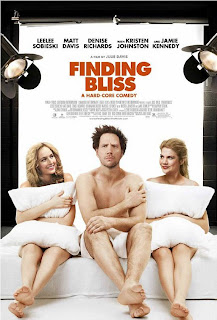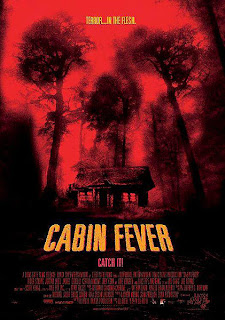Oh, Hi Hollywood: "The Disaster Artist" watchably bizarre with a prankish, committed Franco performance
The Disaster Artist (2017)
104 min., rated R.
2003’s notoriously, awesomely terrible “The Room” might have gone under the radar for general audiences, but it is highly recommended just to believe that it exists at all. Starring writer-director-producer and enigmatic “auteur” Tommy Wiseau, who had unlimited funds but questionable talent, the $6-million film has been hailed “The ‘Citizen Kane’ of bad movies,” a fascinatingly inept and endlessly quotable cult sensation that has carved out a place for itself as a midnight-movie communal experience. Billed as a Tennessee Williams-inspired tragedy and then a black comedy once Tommy Wiseau witnessed the audience erupting into laughter, “The Room” was a labor of love for Wiseau, and though it’s celebrated for extremely different reasons, he did succeed in finding an audience. With that said, those who have had the pleasure of seeing this so-bad-it’s-good must-see with a spoon-throwing, football-passing, line-shouting crowd will get the most out of “The Disaster Artist,” the Hollywood true story of Wiseau and his friend, actor Greg Sestero, and how they got “The Room” made. If “The Room” was a guide on “How Not to Make a Movie,” “The Disaster Artist” is a guide on “How to Make a Movie About the Worst Movie Ever Made.”
Based on the tell-all book “The Disaster Artist: My Life Inside The Room, the Greatest Bad Movie Ever Made” co-written by Sestero and Tom Bissell, “The Disaster Artist” is one of those stranger-than-fiction stories that very few people would believe if it hadn’t actually happened, but here we are. In 1998, Tommy Wiseau (James Franco) meets 19-year-old Greg Sestero (Dave Franco) in an acting class in San Francisco. Tommy is fearless in selling his emotions but not a good actor, and Greg is transparently paralyzed with fear and cannot relax. As these two start hanging out together and bond over idolizing James Dean in “Rebel Without a Cause,” Greg never gets a straight answer on his eccentric new friend's age, or where he is from—Tommy has an indiscernible accent but claims to be “all-American guy” from New Orleans—or how come money is no object. Luckily, Tommy has another apartment in L.A., so he and Greg, whom Tommy calls “Baby Face,” move to Hollywood. When the business keeps knocking them down and rejecting them, Tommy and Greg decide to make a big-time movie on their own, and after Greg reads Tommy’s script of “The Room,” he’s all in. From the casting process, to hiring crew and buying film equipment—Tommy wanted to shoot in both 35mm film and digital video—it becomes clear Tommy has no idea what he’s doing, except direct like a tyrant. Then, as the 40-day shoot exceeds the schedule, the cast and crew stay put, partly because Tommy’s checks never bounce, but no one would predict that “The Room” would become the best worst movie ever made.
Directed by jack-of-all-trades James Franco, who has directed countless films few have seen and even daringly re-created the lost S&M footage of “Cruising” in 2013’s “Interior. Leather Bar.,” “The Disaster Artist” is imbued with a generous give-and-take of prankishness and sincerity, making it bizarrely, compulsively watchable and very entertaining. For viewers with first-hand knowledge of "The Room," the details of the shoot are absurdly funny and painfully cringe-inducing, coming off as the most worthwhile sections of the film. Playing “The Room” lead character Johnny, Tommy keeps flubbing the nonsensical succession of his line that ends with the stilted greeting, “Oh, Hi Mark.” During Tommy’s sex scene with actress Juliette (Ari Graynor) where he directs bare-assed with a sock on his penis, hired script supervisor Sandy (Seth Rogen) hilariously observes that Tommy seems to be thrusting against her belly button, and then later in take after take, he keeps suggesting to Tommy that Johnny should probably change his chuckling response after a character tells a story about domestic abuse. Also, even the actor (Josh Hutcherson) playing a teenager named Denny questions aloud his character’s purpose, and a go-nowhere breast-cancer subplot in “The Room” gets checked to which Tommy responds, “It’s a twist.” Finally, Franco concludes the film with a side-by-side comparison of the real article and Franco’s recreation, displaying such care and meticulous attention to the details of the framing and the actors’ inflections that one wouldn’t mind watching a shot-for-shot remake by Franco.
Of the Franco brothers, Dave Franco has the more grounded role as Greg, coming across earnest and trustworthy. In arguably his most fascinatingly outlandish performance (and that’s truly saying something), James Franco playing Tommy Wiseau almost feels like a stunt at first, but it isn’t a mere impersonation. Not only does Franco nail Tommy’s vampiric, stringy-haired look and drunken Eastern European cadence with uncanny precision, he is deeply committed to capturing Tommy’s quirks, lack of self-awareness, and vulnerability without turning him into a complete joke. Tommy is such an eccentric, complicated enigma who confidently sees himself as an artist, and Franco completely loses himself in this real-life figure’s frame of mind. Around every nook and cranny, there is an embarrassment of riches in terms of familiar faces giving cameos. Melanie Griffith and Sharon Stone have a scene apiece as, respectively, an acting teacher and casting agent; Alison Brie (Dave Franco's real-life wife) plays Greg's girlfriend Amber; and Seth Rogen and Paul Scheer admirably restrain themselves as script supervisor Sandy and DP Raphael, acting as audience surrogates as they incredulously watch Tommy’s on-set decisions. A game Zac Efron appears as an actor playing "Chris-R," and special mention also goes to Ari Graynor for acting badly as Juliette, who plays Lisa.
In the pantheon of movies about the making of a movie—1995’s “Living in Oblivion,” 1999’s “Bowfinger,” 2000’s “State and Main,” and 2008’s “Tropic Thunder”—“The Disaster Artist” is closest to 1994’s “Ed Wood.” Both films are insular if one hasn’t seen “The Room” or “Plan 9 From Outer Space,” and yet there is an accessibility to the film if anyone has ever been a dreamer. Edging the border of mockery, the film is mostly affectionate to Tommy Wiseau and ultimately affirming about the idea of dreams and the creative process. When Tommy’s cast and crew finally get a break for lunch and ask each other what movie they signed up for, actress Carolyn (Jacki Weaver) earnestly answers, “Even the worst day on a movie set is better than the best day anywhere else.” The world may never truly know international man of mystery Tommy Wiseau, but the film opens a window into his weird persona to try and understand Tommy’s passion. Like the entertainingly bad film that inspired it, “The Disaster Artist” has an appeal all its own, but this time, for reasons its filmmakers actually intended.
Grade: B












Comments
Post a Comment